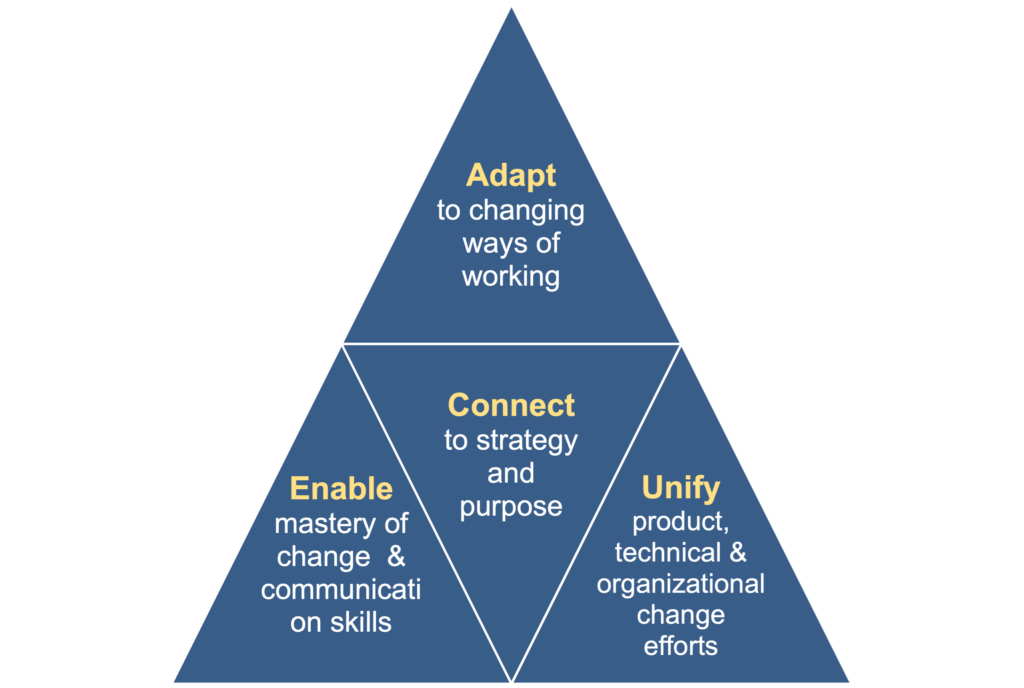Welcome to our fourth and final blog in our series, highlighting the key storylines in the new SAFe Big Picture. Previously, we wrote about enabling strategy agility with lean portfolio management, developing innovative customer-centric products, and accelerating the flow of value to the customer. Today, we are looking at the fourth storyline: maximizing outcomes and realizing business value. These four storylines are available as a downloadable presentation from the Presentations and Videos page. The post Reimagining SAFe: Maximizing Outcomes and Realizing Business Value appeared first on Scaled Agile Framework.
Welcome to our fourth and final blog in our series, highlighting the key storylines in the new SAFe Big Picture. Previously, we wrote about enabling strategy agility with lean portfolio management, developing innovative customer-centric products, and accelerating the flow of value to the customer. Today, we are looking at the fourth storyline: maximizing outcomes and realizing business value. These four storylines are available as a downloadable presentation from the Presentations and Videos page.
Integrating business value into everyday decision-making is critical for long-term success. Specific expressions of business value—such as success criteria for epics, business benefits for features, and business value scores for PI objectives—are found throughout SAFe.
All work across the portfolio and the ART is continuously prioritized through the lens of business value to ensure that the ARTs always work on the most valuable features.
New Business Value guidance article
However, the focus on business value is often lost in many organizations. Teams may get consumed by day-to-day tasks, focusing on processes, technology, or individual KPIs without fully aligning their efforts to the broader value goals. This disconnect can lead to misalignment, wasted efforts, and underperforming initiatives.
A prevailing mindset in many organizations is that ‘business value’ is the responsibility of senior leadership, tied to setting strategic goals. In reality, decentralized decision-making is essential for organizations to be Agile and unlock their teams’ creative potential. To enable this, a clear and contextual understanding of business value at all levels is necessary to guide these decisions.
The challenge, of course, is that business value is not a one-size-fits-all concept; it is deeply contextual. What is valuable for one organization may hold little importance for another. Even within the same organization, portfolio, Agile Release Trains (ARTs), or teams can have vastly different interpretations of what is valuable in the context of their work. The new business value article addresses this very challenge.
The four steps of business value discovery
Business value discovery is an essential activity at every level of the organization, and the new business value article walks you through the four steps that underpin this process.
- Identify and describe what is valuable
Identifying business value happens throughout SAFe events and activities at all levels of the organization. At the portfolio level, portfolio stakeholders and epic owners initiate these discussions through the portfolio Kanban, often starting even earlier during the refinement of portfolio strategy. At the ART level, business value identification unfolds as teams assess solutions, explore usage scenarios, and apply customer-focused techniques.
- Explore the dimensions of business value
To explore and understand business value more deeply, it’s crucial to move beyond these expressions of business value and focus on how this value will be realized. Is it tangible value, such as revenue, or intangible value, such as brand identity? Is it internally facing, focused on cost savings, or externally facing, focused on growth? These and other critical questions provide a more nuanced understanding of business value.
- Identify unknowns in the current understanding of business value
A general guideline is that every statement about business value is simply a hypothesis unless there is concrete evidence to support it. This underscores the importance of building an effective feedback system. Categorizing ‘unknowns’ associated with business helps determine the right action for managing them effectively.
- Determine how business value will be measured
Understanding how business value will be measured is integral to the discovery process. It ensures that the agreed approach aligns with our understanding of what we have determined to be valuable. Establishing the infrastructure and methods necessary for capturing empirical data about outcomes is essential.
Business value discovery is an essential activity at every level of the organization. The four steps described in the business value article ensure a greater understanding of what is valuable, help create alignment, inform decision-making and prioritization, and improve the ability to express this value through features, epics, strategic themes, and other outlets.
We hope you find this guidance useful in your context.
— Andrew Sales and the Framework Team
Reimagining SAFe blog series:
- Reimagining SAFe: Enabling Strategy Agility with Lean Portfolio Management
- Reimagining SAFe: Developing Innovative Customer-Centric Products
- Reimagining SAFe: Accelerating the Flow of Value to the Customer
- Reimagining SAFe: Maximizing Outcomes and Realizing Business Value
The post Reimagining SAFe: Maximizing Outcomes and Realizing Business Value appeared first on Scaled Agile Framework.










